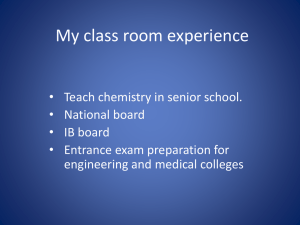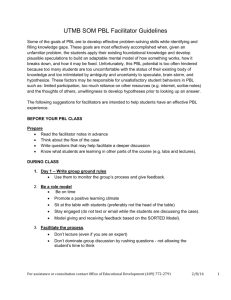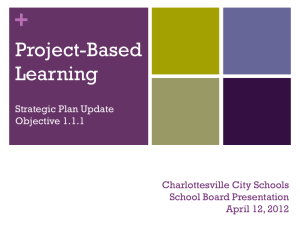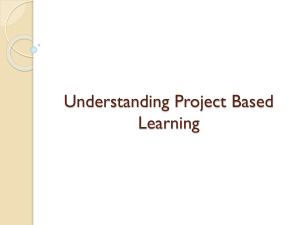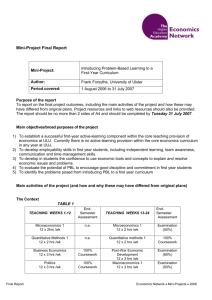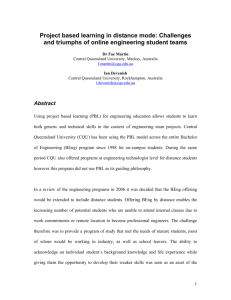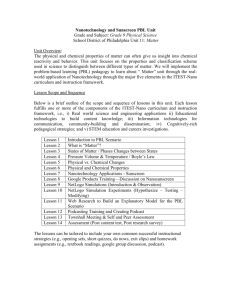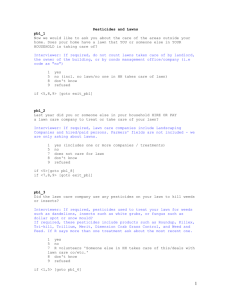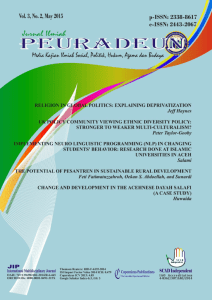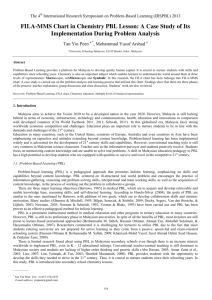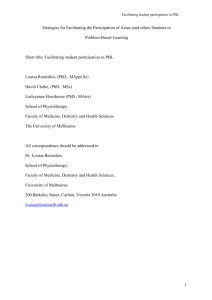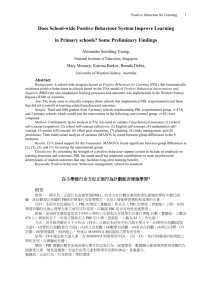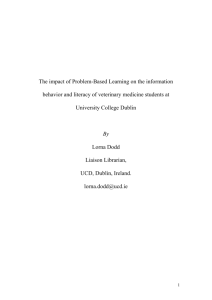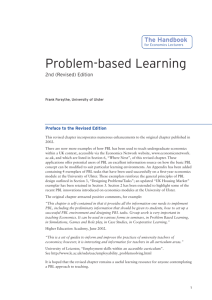Concept mapping in problem based learning: a cautionary tale
advertisement
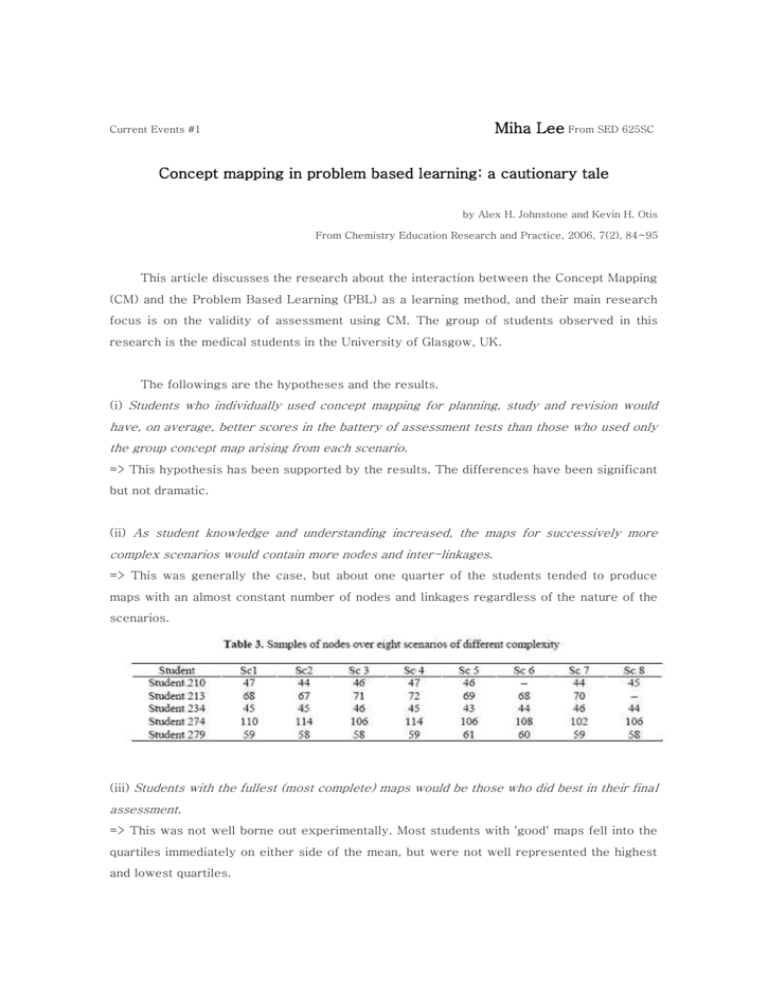
Miha Lee From SED 625SC Current Events #1 Concept mapping in problem based learning: a cautionary tale by Alex H. Johnstone and Kevin H. Otis From Chemistry Education Research and Practice, 2006, 7(2), 84~95 This article discusses the research about the interaction between the Concept Mapping (CM) and the Problem Based Learning (PBL) as a learning method, and their main research focus is on the validity of assessment using CM. The group of students observed in this research is the medical students in the University of Glasgow, UK. The followings are the hypotheses and the results. (i) Students who individually used concept mapping for planning, study and revision would have, on average, better scores in the battery of assessment tests than those who used only the group concept map arising from each scenario. => This hypothesis has been supported by the results. The differences have been significant but not dramatic. (ii) As student knowledge and understanding increased, the maps for successively more complex scenarios would contain more nodes and inter-linkages. => This was generally the case, but about one quarter of the students tended to produce maps with an almost constant number of nodes and linkages regardless of the nature of the scenarios. (iii) Students with the fullest (most complete) maps would be those who did best in their final assessment. => This was not well borne out experimentally. Most students with 'good' maps fell into the quartiles immediately on either side of the mean, but were not well represented the highest and lowest quartiles. Students with 'poor' maps were distributed, almost equally, between the lowest and highest quartiles. Recommendations for practice by the authors are 1. Any device which aims to break down the linearity and compartmentalization in our students' learning is to be encouraged. We believe that concept mapping has a contribution to make to this. 2. The skills of concept mapping have to be taught, but thereafter maps are the private, idiosyncratic aids and products of our students' learning. 3. It is very doubtful if concept maps should be used be a 'non-author' for assessment purposes. To be useful learning tools, concept maps should be unsuitable reading for another observer. What I have learned from this article are ..... First, the problem based learning method (PBL) has been learned. I did not know about PBL before reading this article although I have some knowledge about problem solving activity. Now I'm thinking of PBL as a helpful learning method. If I apply this method to my class, students will learn about how they solve the problem in reality and how scientific concepts are connected. However, it has some limits to apply in ordinary school settings. In this research, the students are medical school students who are presumably smart and self-controlled. But our high school students are not intelligent enough to study by themselves. Thus, it will take long time for them to finish one subject. Moreover, teachers should prepare the scenarios for students, which means we need to make time for it. When reading this article, I came up with a scenario in which students are trying to solve the problem with air pollution by using chemistry (combustion of fossil fuels), Earth Science (meteorological phenomena of the air) and physics (the laws about gas). In the same way, if I put more efforts in designing scenarios, I can come up with many for my general science class. So, I need to study more about PBL. Second, the concept map has been learned. Maybe ten years ago when I was involved in a teacher-retraining program, one of instructors talked about using the concept map in teaching organic chemistry, and I found it interesting. But I have been gotten around to it. Now I came to know the exact name of the book 'Learning how to learn' by Novak and Gowin. So, I will read it. The reason why I found CM fascinating is because CM provides me useful structures of knowledge that help me understand and remember a lot of scientific concepts. Personally, I don't like to memorize scientific contents without meaningful connecting with each other. The fragments of knowledge cannot remain long in my memory. In this research, the experimental group that are encouraged to use CM when they study show higher achievement than control groups, especially students with high scores. I think this result prove CM useful in Science teaching. From my experience as a science teacher, many students who are interested in science also don't like to learn by heart. Thus, I actually have been using concept maps every class to convey the structure of the contents, but the maps are made by me, not students. So, when I start to teach again, I'll give students the opportunities to come up with their own CM. Last, I have found the assessment using concept maps invalid. There are many resources for evaluation of students' performance such as paper tests, projects, and reporting papers. And we need to make every effort to include various kinds of resources to make evaluation valid. However, I wondered sometimes if there are enough validity in my evaluating of students' papers because of the difference between girls' and boys'. To illustrate my idea, I would quote the result of this article. Many students whose maps came into the 'good' category are around mean in the distribution of the normal assessment scores. However, some of the students who are using 'poor' maps for their study actually show excellent achievements in their tests. Like this, this kind of taking notes or drawing reports don't show consistency with normal paper tests, especially for girls. My classes are coed, and girls are usually better than boys in their attitude toward taking notes and drawing pictures. So, I have to give girls more scores on their experiment reports than boys although I question their understanding of what I have taught. In a similar way, people tend to have some kind of personal habit using concept maps. As a matter of fact, I want this article to include analysis of gender of the students to show relation between gender and the quality of CM. By the way, we teachers must be careful in making an assessment of students not to depend too much on the appearance of papers.

